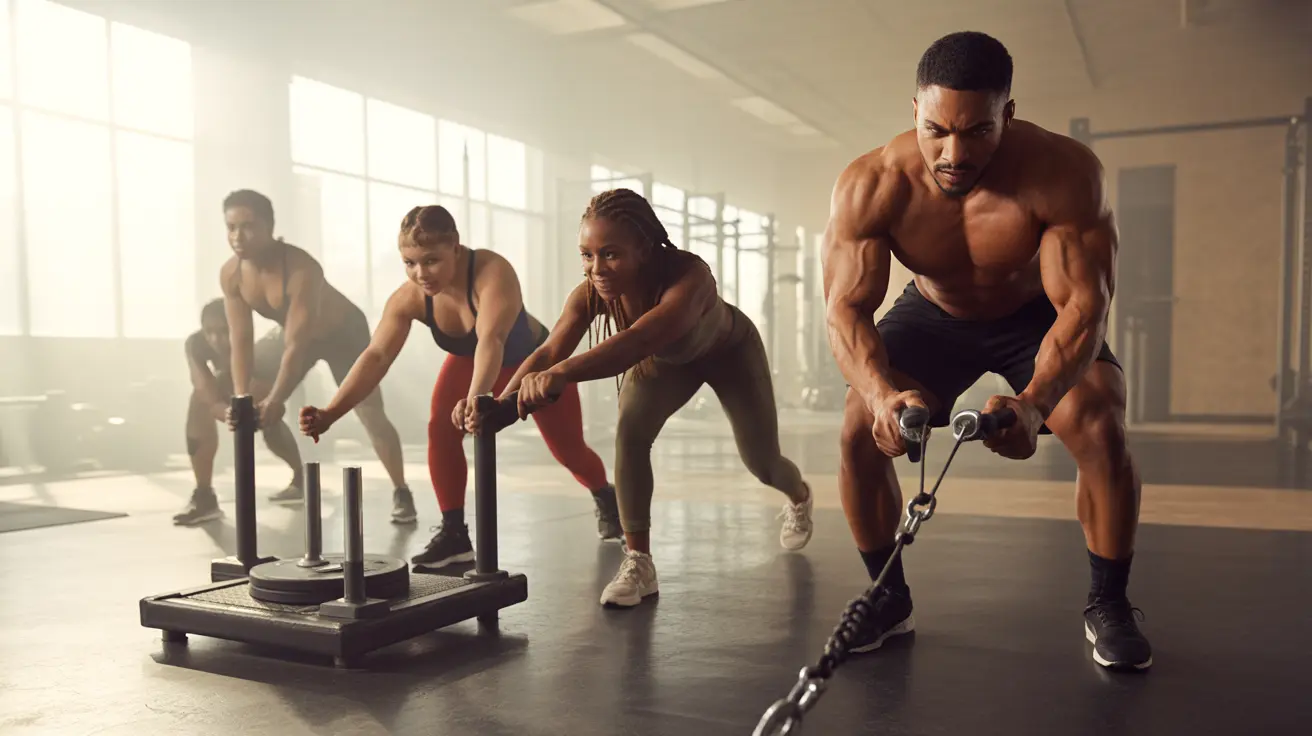Push-pull workouts have become increasingly popular among fitness enthusiasts and bodybuilders for their efficient approach to muscle building and recovery. This training method divides exercises into two main categories - pushing and pulling movements - creating a systematic way to target different muscle groups while allowing adequate rest between sessions.
Understanding the push-pull workout structure can help you maximize your gains while minimizing the risk of overtraining. Let's explore how this training style works and how you can implement it effectively in your fitness routine.
Understanding Push-Pull Training Fundamentals
A push-pull workout splits exercises based on the primary movement pattern involved. Push exercises typically target chest, shoulders, and triceps, while pull exercises focus on back, biceps, and rear deltoids. This natural division allows for better recovery and reduced muscle fatigue.
Push Exercises Explained
Push movements involve pushing weight away from your body or extending your joints. Key exercises include:
- Bench press (flat, incline, decline)
- Overhead shoulder press
- Push-ups
- Tricep extensions
- Dips
Pull Exercises Explained
Pull exercises involve pulling weight toward your body or flexing your joints. Essential movements include:
- Pull-ups and chin-ups
- Rows (barbell, dumbbell, cable)
- Lat pulldowns
- Bicep curls
- Face pulls
Benefits of Push-Pull Training
This training style offers several advantages over traditional body-part splits:
- Improved recovery time between workouts
- Better muscle balance and symmetry
- Reduced risk of overtraining
- More efficient workout scheduling
- Enhanced strength development
Designing Your Push-Pull Program
Weekly Schedule Options
There are several ways to structure your push-pull routine:
- Push/Pull/Legs split (6 days on, 1 day rest)
- Upper Push/Upper Pull split (4 days per week)
- Full body Push/Pull alternation (3-4 days per week)
Sample Push Day Workout
A basic push workout might include:
- 3-4 sets of bench press (8-12 reps)
- 3 sets of overhead press (8-12 reps)
- 3 sets of incline dumbbell press (10-15 reps)
- 3 sets of lateral raises (12-15 reps)
- 3 sets of tricep pushdowns (12-15 reps)
Sample Pull Day Workout
A complementary pull workout could include:
- 3-4 sets of pull-ups or lat pulldowns (8-12 reps)
- 3 sets of barbell rows (8-12 reps)
- 3 sets of face pulls (12-15 reps)
- 3 sets of cable rows (10-15 reps)
- 3 sets of bicep curls (12-15 reps)
Frequently Asked Questions
How does a push-pull workout routine help build muscle and improve recovery compared to typical body splits?
Push-pull workouts enhance muscle recovery by naturally grouping synergistic muscles together, allowing complementary muscle groups to rest while others work. This approach typically enables higher training frequency and volume compared to traditional body-part splits, potentially leading to better muscle growth.
What are some effective push and pull exercises to include in a balanced push-pull workout plan?
For push exercises, focus on compound movements like bench press, shoulder press, and dips. For pull exercises, incorporate deadlifts, rows, pull-ups, and face pulls. Include both compound and isolation exercises for complete muscle development.
Is a push-pull workout suitable for beginners, and what does a good weekly schedule look like?
Yes, push-pull workouts can be suitable for beginners. Start with a three-day split (push/pull/rest) or four-day split (push/pull/push/pull) to allow adequate recovery. Focus on proper form and gradually increase intensity and volume.
Can push-pull workouts help prevent injury and correct muscle imbalances in posture?
Yes, when properly programmed, push-pull workouts can help maintain muscle balance and improve posture by ensuring equal attention to opposing muscle groups. This balanced approach helps prevent overuse injuries and postural issues.
How often should I rotate between push, pull, and legs days for maximum muscle growth and strength?
For optimal results, follow a push/pull/legs split with one day dedicated to each, training 5-6 days per week with one rest day. Alternative options include an upper/lower split or three full-body workouts per week, depending on your recovery capacity and schedule.




